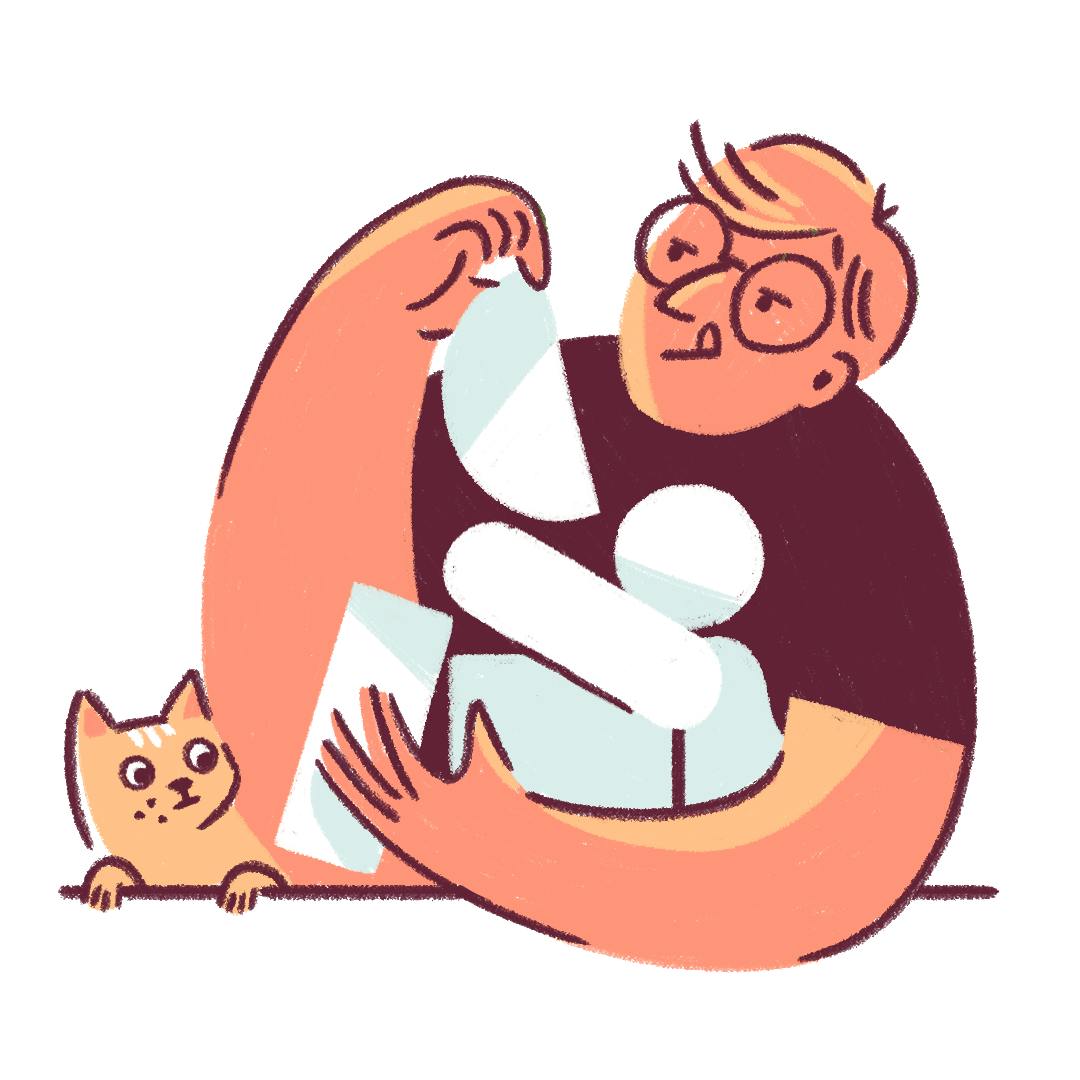Snack›Art
Back to the drawing board
Lessons in failing with resilience and creativity, featuring Mike Stone, co-founder of The Gnar Company.

Mike Stone is a lot of things: a software engineer, a former professional lacrosse player, a new dad, and a two-time founder. He’s currently the CEO of a successful Boston-based development company, which he co-founded and (boldly) named The Gnar Company. They have a robust client list, a great reputation, and a growing, happy team.
But getting to this point wasn’t always easy — or linear. We caught up with Mike about how some of his biggest failures led to his most important pivots.
Chapter 1
Mike’s foray into founding began in 2011 when he started his first company, GivingSomeThing, a platform to give donors the ability to donate tangible goods (not just money) to nonprofits.
A couple of years in, he and his co-founder realized that “cheaping out” on the tech side of the business in the early days would come back to haunt them. That mistake eventually caused their platform and company to fold, but it also taught Mike a key lesson: He absolutely loved to code.
Mike taught himself how to code for the first time out of desperation, since they couldn’t afford to hire a tech team in GivingSomeThing’s final days. This last attempt to avoid the company’s failure opened up an entirely new career path for him.

Back to the drawing board: After GivingSomeThing slowly fizzled out, Mike took his newfound appreciation for backend tech and software structure, and set out on a new career path. He enrolled in an engineering bootcamp to hone his coding skills.
“It was a snowball effect,” Mike said. “The more I started coding, the more I discovered how much I liked it. It was almost scary. It was overwhelming to think I had found the thing I really wanted to do."
Chapter 2
Fresh out of bootcamp, Mike landed his first engineering role at a health and well-being startup called MeYou Health, where he worked on a highly collaborative engineering team. Not only did the work solidify his love for coding, but it also showed him exactly what kind of philosophy and vibe he wanted on an engineering team — and at a company.
Unfortunately, a couple years into his tenure, MeYou Health was acquired by another company, and a majority of the engineering team was laid off — including Mike. Luckily, because of the transparent nature of the company’s leadership, the team was prepared for the layoffs, and Mike had already gone...

...Back to the drawing board: Mike and three other engineers from MeYou Health teamed up on a side project in the final days of the company, which turned into a full-time gig when they were laid off. Their new project was an engineering consultancy to help companies of all sizes build strong, foundational software.
“At MeYou Health, I learned what it really means to be a software engineer and what that process looks like day to day,” Mike said. “But the biggest thing I learned is what kind of culture and environment I wanted to build at any future company.”
Chapter 3
Mike and his engineering teammates took what they had already started building and officially founded The Gnar Company (a temporary name that has now stuck for six years). They secured work and clients almost immediately — but also immediately, two of the four founders backed out.
“With half the core team gone, a lot of signs pointed to this not working out,” Mike said.
Mike and his remaining co-founder, Nick Maloney, put all their energy and resources into building a consultancy with deep expertise in software development, but also a deep respect for their team and working environment.
“When you start a company, people think you’re the boss and you work for yourself. But what I’ve found is exactly the opposite,” Mike said. “I work for everybody else at the company. I work for my employees.”

Epilogue
Six years and more than twenty full-time team members later, it’s safe to say things are working out so far. But even though his fully-bootstrapped company is thriving, Mike is always learning, changing, and going back to the drawing board (especially when it comes to things like managing cash flow and hiring).
“Sometimes it’s still so intimidating,” Mike shared. “There are times when I'm dying for a boss. I’m like, can I please escalate this problem to somebody else? But that’s one of the places I’ve grown the most. I’ve just had to figure it out.”



